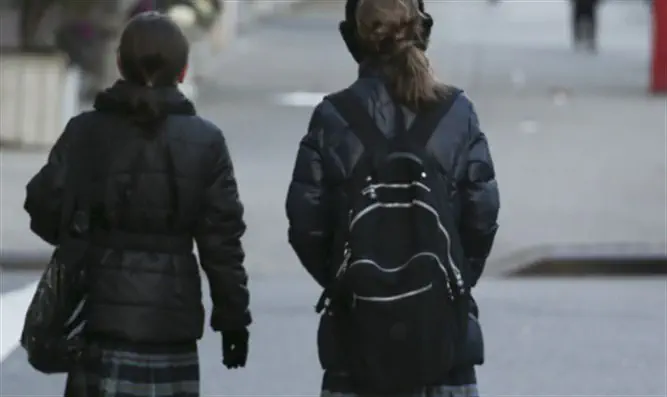 |
| Yeshiva Torah Temima made headlines when one of his teachers and assistant principal,[6] Rabbi Joel (Yehuda) Kolko was charged in 2006 with sexually abusing two first-graders and forcing an adult former student to touch him during a visit to the school. Five former students also filed suit against the yeshiva, alleging the school administrators knew about Kolko’s molestation of students for decades but sought to cover it up and intimidate students who spoke out. Kolko later pleaded guilty to two lesser counts of child endangerment and was sentenced to three years’ probation,[7] and has left the school.[8] The suit also alleged that school principal Rabbi Lipa Margulies waged a “a campaign of intimidation, concealment and misrepresentations designed to prevent victims from filing lawsuits.”[9] |
Many Yeshivas and Catholic Schools are registered as colleges and universities so they can soak the government for federal funding...If your school is one of these fraudulent or "legitimate" entities....go get 'em!
Feds investigating Sandusky --- fine Penn State a record $2.4M
The U.S. Department of Education concluded that Penn State largely ignored many of its duties under the 1990 Clery Act.
- File a complaint
- Other ways to file a complaint: OIG Hotline homepage
- Questions: 1-800-MIS-USED (1-800-647-8733)
http://ope.ed.gov/accreditation/
http://www.ed.gov/

Jerry Sandusky in 2015.
(AP Photo/Gene J. Puskar, File)
The fine was the result of a five-year investigation that began shortly after Sandusky's 2011 arrest raised questions about what administrators had known about the former assistant football coach, now serving decades in prison for child molestation. The report said Penn State officials disclosed in June that 45 people have claimed they were victims of Sandusky, who was convicted of abusing 10 boys.
Ted Mitchell, undersecretary at the Education Department, said transparency about what happens on campus helps ensure that colleges and universities are safe.
"When we determine that an institution is not upholding this obligation, then there must be consequences," Mitchell said.
The Education Department found the school violated regulations when it didn't warn students and employees of the forthcoming charges against Sandusky, who was convicted in 2012 and is due in court Friday as he seeks to have the conviction thrown out or get a new trial.
"In short, a man who was about to be charged with violent crimes against defenseless minors was free to roam the Penn State campus, as he pleased," the report said.
Penn State said the report was being reviewed and noted that since 2011 it has implemented "robust" training and collection processes under the Clery Act.
The school said Clery Act procedures "cannot be an end unto itself, but is rather part of a broader culture of compliance. We will continue our numerous and vigorous efforts to create a culture of reporting, safety and accountability."
The Education Department said Penn State's police department concealed its investigation into a 1998 report involving Sandusky and a boy in a team shower. Police didn't record the matter on its daily crime log even though university policy required that the log describe the type, location and time of every criminal incident.
The university argued that police lacked the clarity to determine whether the interaction rose to the level of a sex offense, and because it wasn't clear that a crime had occurred, there was no need to record it on the crime log. But the Education Department noted that campus police recorded far less serious matters on their log, including a man sleeping in a stairwell and a slip-and-fall in a public shower.
"In light of these entries, Penn State's contention that the reported incident of a middle-aged man inappropriately touching an 11-year-old boy, while naked and showering with him, didn't rise to the level for inclusion in the daily crime log strains credulity," the Education Department wrote in its report .
Two senior administrators were charged in 2011 with covering up the report. The officials, then-athletic director Tim Curley and then-vice president Gary Schultz, still await trial along with former Penn State president Graham Spanier on charges of endangering the welfare of children and failing to properly report suspected abuse.
The report disclosed new details about the athletics staff, including that then-head coach Joe Paterno once had his secretary email Spanier and Curley to say he would take care of disciplining players involved in a 2007 fight at an off-campus apartment building.
Paterno (did a Margulies) then had a text message sent to players telling them that if they went to the university's judicial affairs to answer code of conduct complaints they'd be "thrown off the team," the report said.
The report said Paterno was seen during most of his tenure as a disciplinarian and generally didn't interfere in police investigations or ignore bad behavior by his players. But when the school began to reform its student disciplinary process, he "repeatedly resisted" efforts to apply the changes to the football program.
"What ensued was an overlong and dysfunctional standoff between the football program and student affairs officials with the president positioned somewhere between the two sides," the report said. "Some members of the football team, aware of the conflicts, took the program's attitude toward the student conduct process as license to break the rules."
The previous record Clery Act fine was $357,500 against Eastern Michigan University in 2007, reduced to $350,000 in a settlement.
*
Four years after Jerry Sandusky, a former Penn State
assistant football coach, was convicted of sexually abusing 10 young
boys, the federal government is seeking to fine the university nearly
$2.4 million for failing to alert the public about Mr. Sandusky’s
conduct and other campus dangers.
In announcing the proposed fine
— the largest ever for failure to comply with the Clery Act, a federal
law requiring prompt public alerts about safety threats as well as
annual disclosures of campus crime statistics — the United States Department of Education painted a damning picture
of how university officials permitted Mr. Sandusky “unfettered access”
to campus buildings and facilities even though officials knew he posed a
danger to the campus community....
http://www.nytimes.com/2016/11/04/sports/ncaafootball/penn-state-jerry-sandusky-clery-act-fine.html?emc=edit_tnt_20161103&eml_thmb=1&nlid=32999454&tntemail0=y&_r=0
http://www.foxnews.com/us/2016/11/03/feds-investigating-sandusky-fine-penn-state-record-2-4m.html




































